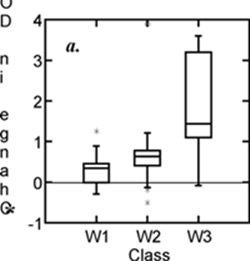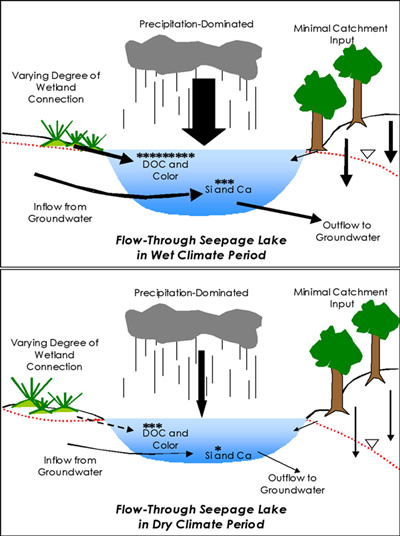Much of the inter-annual variation in lake chemistry is driven by climate, both in terms of long-term drivers related to climate change, periodic drivers such as el Nino, and short-term drivers related to alternating drought and wet periods. During dry periods hydrologic connections between lakes and flowpaths supplying water from wetlands and groundwater systems diminish, reducing delivery of important solutes such as dissolved organic carbon (DOC) and base cations (Ca). We used chemistry data from 54 seepage lakes (which lack surface inlets) in Maine collected during a drought year (2001) and a near normal precipitation year (2002) to determine how short-term fluctuations in precipitation influenced lake chemistry. We found that most lakes increased in DOC (Figure 1), and that responses were linked to the strength of connection with adjacent wetlands.
These results suggest that lakes will not all behave the same under climate change scenarios, but that response will differ by hydrologic type and connections with the landscape. These results have important implications for lakes as decreases in DOC would increase the penetration of UV radiation into lakes, potentially damaging aquatic organisms. During drought lakes can also receive reduced inputs of ion-rich groundwater which protects lakes from acidification by atmospheric deposition. Because climate change interacts with other stressors influencing aquatic systems, it is important to understand how lake biogeochemistry might change under different climatic conditions.


